
As I already shared, we went to Naxos for the carnival. It was great, totally different to anything I’ve ever done before. A real adventure, so much fun! Of course, little Vincent had to sit out the actual Lampathofori (Parade of Torches) as it was too loud and too crowded. He stayed in the air bnb while Zefi and I joined the crowd as they chanted to the beat of the drums.
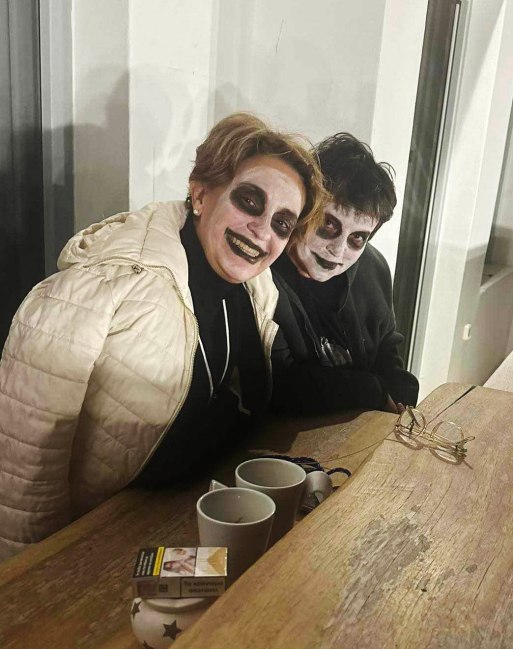
We were lucky (or unlucky) in our choice of air bnbs ’cause we were right over the main square where everything happened on Saturday night. It was ideal for watching thing unfold from our own balcony, but not ideal for the early morning wake up on Sunday as they sound tested the equipment for the float parade later that day.
Dionysia was a Panhellenic festival in honor of Dionysus. One of the most important centers of these festivals was Naxos. The celebration included wine drinking, cheerfulness, unbridled enthusiasm, cymbals, drums, troupes, processions, dithyrambs (choral chants) and phallophoria.
Here is my own video of the night:
The next day, we went to a couple of villages where we saw the Koudounati.
Men strapped with bells and carrying Dionysian phallic symbols known locally as somba, stir up a racket while parading through the village alleys in a procession held to welcome the spring season and exorcise evil spirits.

Turns out, this would have been a better day to leave little Vinnie at home. It was way louder and way more crowded. Poor little man cowered in his bag. Especially in Apeiranthos, the town most famous for the Koudounati where if you fell you’d never hit the ground.
However, we managed to catch them in another town as well, where this lovely man was happy to take a photo with us.

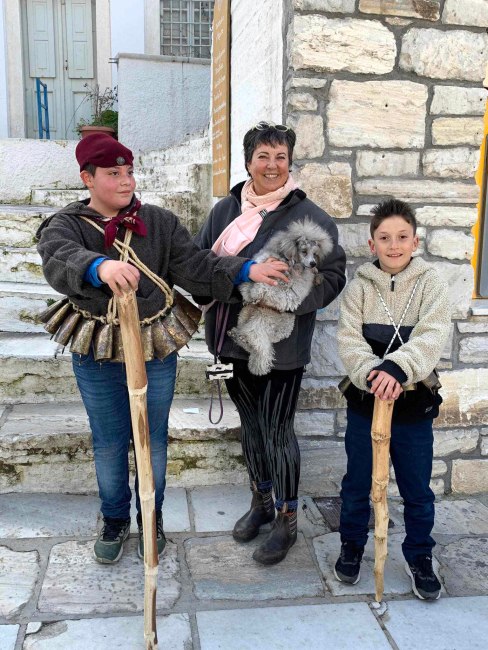
Here is my short video of the event:
Now, if you’re wondering at the lack of actual MEN in those parades, let me take some time to rant a little about the organizational skills of the Greeks and their total inability to stick to any kind of schedule. Ever.
The Naxos municipality puts out a timetable of events around the island, and like most gullible people who have lived in countries where a schedule is a schedule, we made our plans. I’m not saying we didn’t expect some delays… its normal to have some delays… especially in Greece where the national tag line is ‘siga siga’ (literally ‘slowly slowly’ or ‘it’ll get done eventually‘).
However, let me warn everyone who will visit Greece – times/schedules etc are not a program based on any kind of reality but of fantasy. As Captain Barbarossa said in Pirates of the Carribean, its more like ‘guidelines’….
Seriously. The program said that the Lambadifori would start at 6pm at the square were people would get dressed to start the parade. I didn’t expect to see them till about 8pm, cause it needs to be dark, right? They didn’t show till almost midnight. sigh. Good thing we didn’t turn up to get painted and dressed at 6pm or we’d have been dead on our feet before the parade began!
And it was the same with the Koudounati. We got to Apeiranthos around 2.30pm, they were meant to gather at 2pm. We left there at 5pm when someone told us that the men still hadn’t gathered, it would be at least another hour before they made their entrance. Only the young boys were happy to run around town with the bells and clubs – so, no wild mustachioed men for us… We weren’t going to waste more time being squished while we waited.
We also hoped to see the Kordelati but missed them due to the lateness of everything. We ran into these two Foustanelatoi just as they finished their dancing…
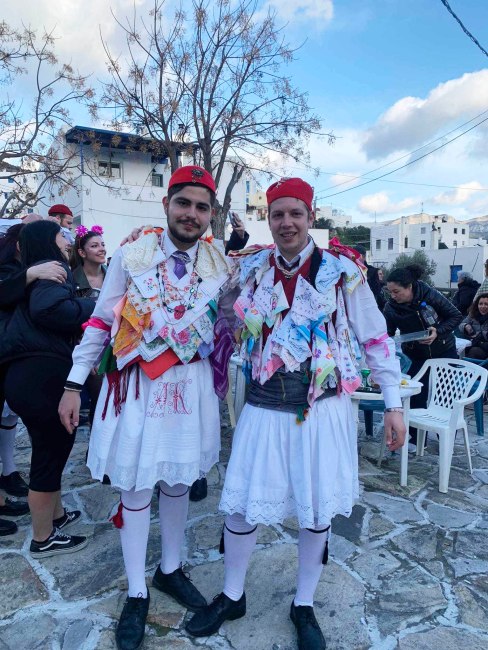

On Clean Monday the custom of ribbons and foustanelata (foustanelades) is observed, which, like the other customs of the Carnival, is a memory of the ancient Dionysian festivals and coincides with the ancient Anthestiria.
According to scholars of folk tradition, kordelatoi and foustanelatoi (foustanelades), during the Venetian occupation, were a way for the Orthodox to communicate with each other, while it is said that during the revolution of ’21, they sewed triangular handkerchiefs they had on their chest and hid gunpowder there to transport it to the Peloponnese and elsewhere.
The custom is that the young people of the village, wearing colored ribbons or foustanelles respectively, form groups, the bairakia, led by the bairachtar, that is, the one who holds the bairaki of the group, which is a thick reed with a colored scarf at the end, and to honor with their visit the women of the neighboring villages, dancing with them in the central square accompanied by violins and lutes. In turn, the women of each village treat the men with food, sweets and wine to please them.
In the past, this custom was also a way for young people from different villages to get to know each other and so many weddings occurred. Today the inhabitants of the island zealously maintain the custom and pass it on from generation to generation.
Amongst all the things happening around us, we visited a few villages, had some great meals at tavernas, caught up with family and friends and made some new ones.


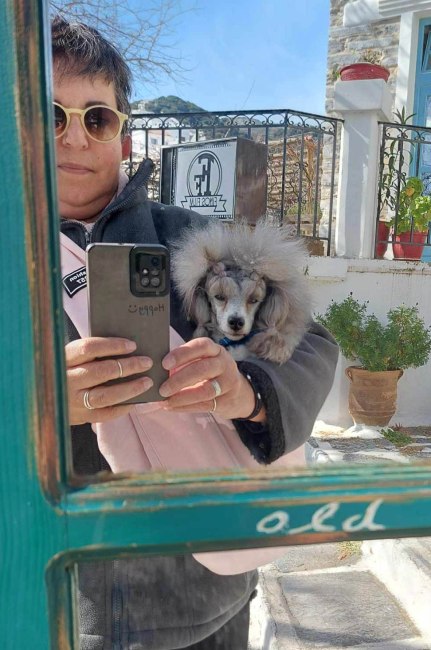
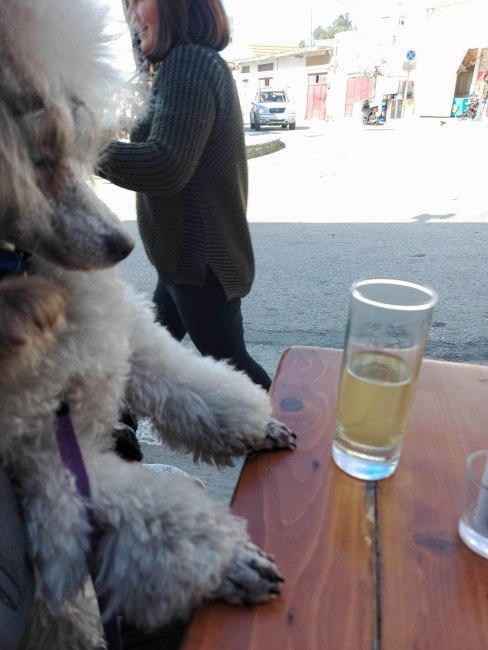
Walking up to the Portara on Sunday morning, Vincent made a new friend. Here she is, peering at us over the wild flowers.

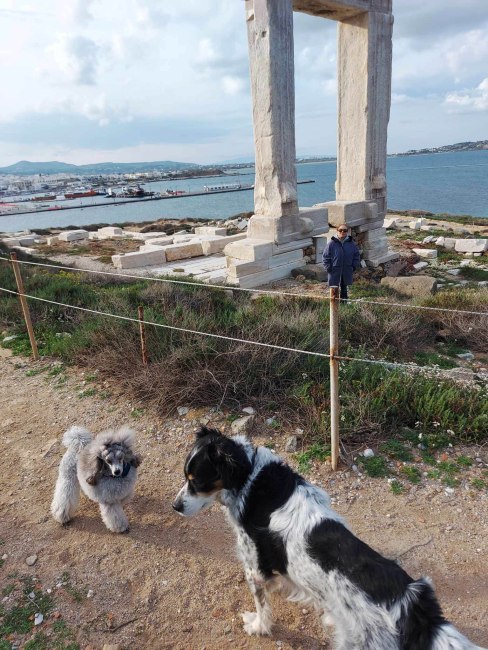

Naxos’ Temple of Apollo – Portara, a huge marble gate and the single remaining part of an unfinished temple of Apollo of 530 BC, is the island’s emblem and main landmark.
Standing on the islet of Palatia, at the entrance to Naxos harbor, it comprises four marble parts weighing about 20 tons each.
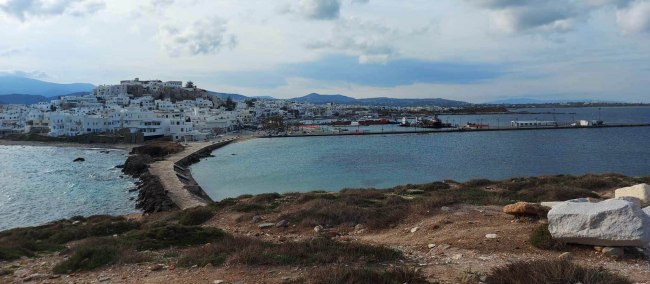
Here are some pics I took along the way.
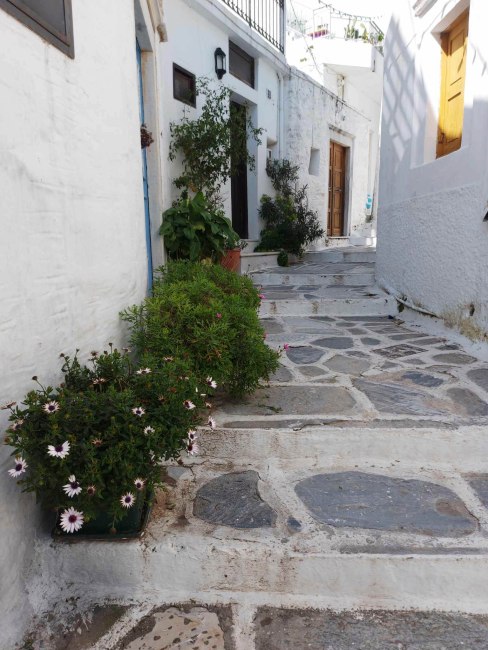
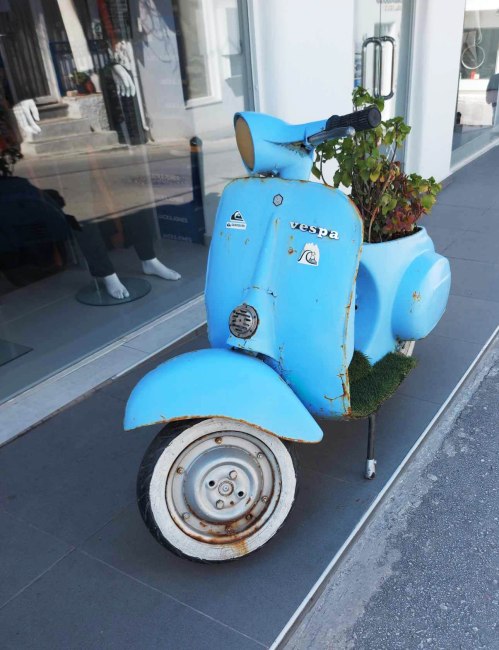
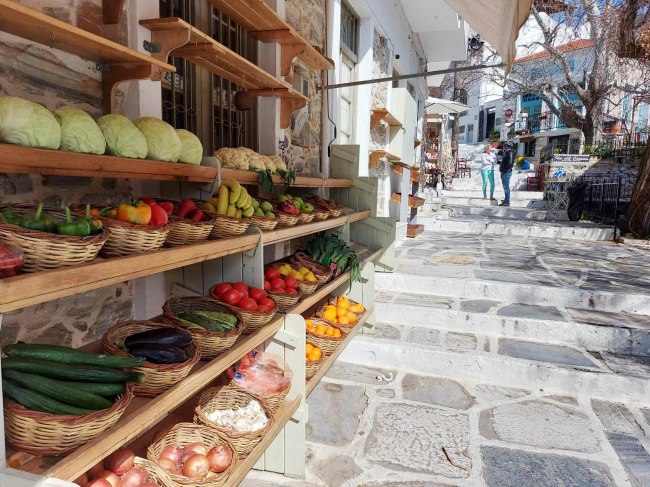
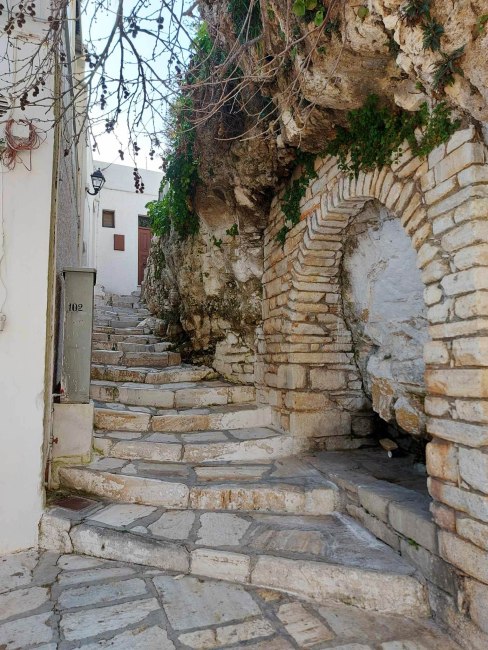

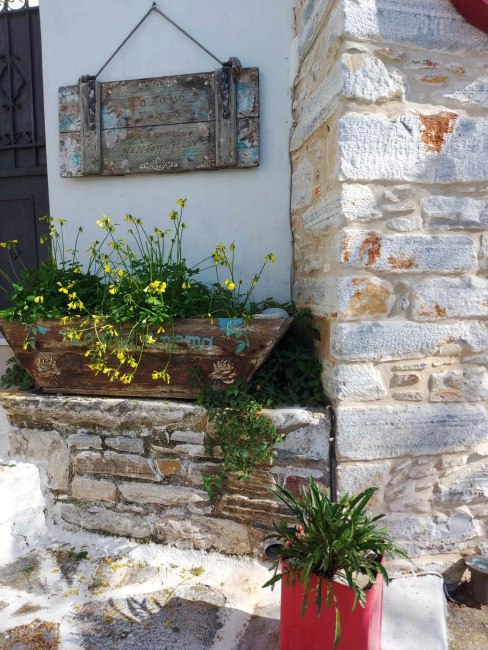
We visited Lionas, a tiny place you wouldn’t even call a village, on the furthest end of Naxos. There was a cute little taverna there and a small beach with the most beautiful black sand, black stones and the best white rocks I’ve ever seen.

This is how Vincent felt after all our travels…

Pretty much how I felt too!
Back home now and trying to catch up on all the things I have on my to-do list. Well, some of them at least!
z

